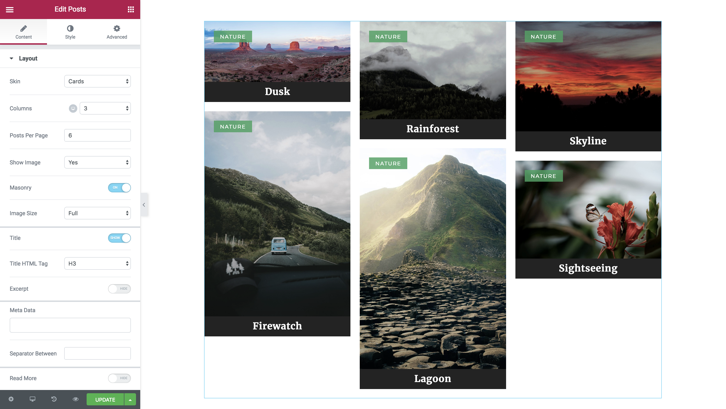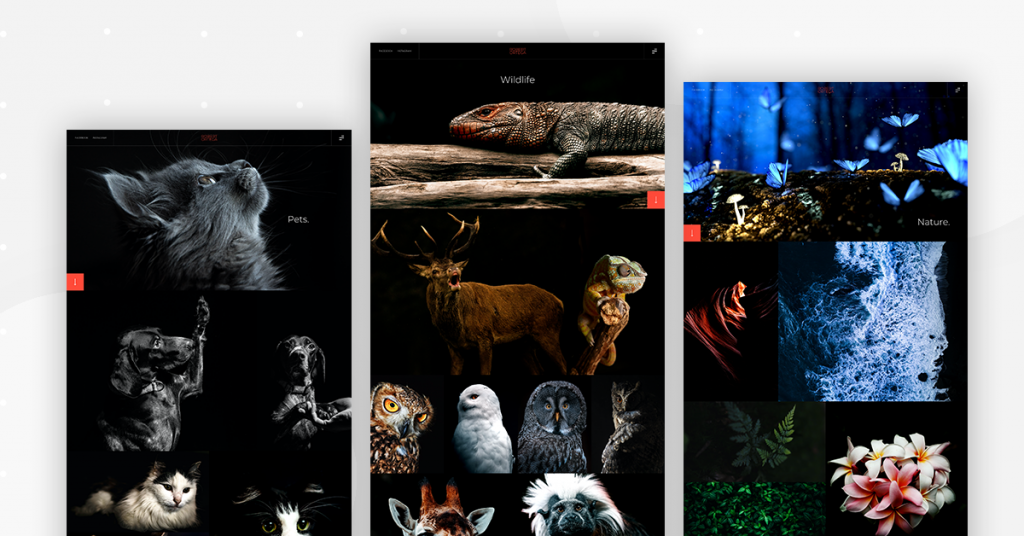Table of Contents
But here’s the good news: You absolutely can make a living doing what you love. Whether you’re a seasoned pro or just starting out, there are countless ways to monetize your photography skills. In this comprehensive guide, we’ll break down the proven strategies, insider tips, and essential tools (including how Elementor can revolutionize your online presence) to transform your passion into a thriving business.
Get ready to ditch the starving artist stereotype and step into a world of financial freedom and creative fulfillment. This is your ultimate roadmap to making money with photography in 2026.
Laying the Foundation for Success
Finding Your Niche and Building Your Brand
The photography world is vast, encompassing everything from breathtaking landscapes to intimate portraits, high-octane sports, and delicate macro shots. Trying to be a jack-of-all-trades can dilute your expertise and make it harder to stand out. Finding your niche means identifying the type of photography that truly excites you and aligns with your unique skills and vision.
You may have an eye for capturing the raw emotion of weddings, the architectural beauty of cityscapes, or the vibrant energy of live events. By specializing in a niche, you not only become more proficient in that specific area but you also attract a targeted audience who values your particular style.

Once you’ve honed in on your niche, it’s time to build your brand. Your brand is more than just a logo or a website; it’s the story you tell, the values you represent, and the experience you offer clients.
Think about what makes you unique as a photographer. What are your core values? What kind of feeling do you want your work to evoke? Craft a compelling brand message that resonates with your target audience and differentiates you from the competition.
Your brand should be evident in every aspect of your business, from your website and social media presence to your client interactions and marketing materials. Consistency is key to building a recognizable and memorable brand that clients will trust and recommend.
Showcasing Your Work: The Power of a Professional Portfolio
Your portfolio is your most valuable marketing asset. It’s a curated collection of your best work, showcasing your skills, style, and expertise. Potential clients will often decide whether to hire you based on the quality and relevance of your portfolio.
Creating a professional portfolio doesn’t have to be complicated. You can easily build a stunning website using Elementor’s intuitive drag-and-drop interface. With a vast array of templates and customization options, you can create a website that perfectly reflects your brand identity and showcases your work in the best possible light.

Whether you’re a seasoned pro or just starting out, finding your niche and building a strong brand are essential steps in establishing a successful photography business. By focusing on what makes you unique and showcasing your best work in a professional portfolio, you’ll attract the right clients and set yourself up for long-term success.
Essential Gear and Technical Skills
While a creative eye and passion are paramount, having the right gear and technical know-how can significantly elevate your photography and, by extension, your earning potential.
Investing in Quality Equipment
Avoid falling into the trap of thinking you need the most expensive gear to be successful. However, investing in a few key pieces of quality equipment can make a world of difference in the quality of your images:
- Camera: A DSLR or mirrorless camera with manual controls will allow you to experiment and achieve your desired results.
- Lenses: Start with a versatile lens like a 24-70mm or 35mm prime, then consider adding specialized lenses for your niche (e.g., macro lens for close-ups, telephoto for wildlife).
- Lighting: Even natural light photographers can benefit from reflectors, diffusers, and a basic flash setup to control light and create stunning effects.
As you gain experience and start earning, you can gradually upgrade your gear, but don’t let a lack of top-of-the-line equipment hold you back from getting started.
Mastering Camera Settings and Composition
Understanding the fundamentals of camera settings (aperture, shutter speed, ISO) and composition (rule of thirds, leading lines, framing) is crucial for capturing impactful images. Take the time to learn these concepts through online courses, workshops, or books. Practice regularly to develop your eye and intuition.

Experiment with different settings and compositions to discover your unique style. Feel free to break the rules and try new things. The more you experiment, the more you’ll learn and grow as a photographer.
Post-Processing and Editing
Even the most stunning photos often benefit from some post-processing to enhance colors, adjust exposure, and remove distractions. There are countless editing software options available, from free programs like GIMP to industry-standard Adobe Lightroom and Photoshop.
Experiment with different editing styles to find what works best for your images. Remember, the goal of post-processing is to enhance your photos, not to transform them completely.
Elementor AI: Your Secret Weapon for Image Enhancement
For Elementor users, the platform’s AI capabilities offer a powerful tool for taking your image editing to the next level. Elementor’s AI Image Enhancer can automatically improve image quality, adjust lighting and colors, and even remove unwanted objects. This can save you valuable time and ensure your photos look their best.
By mastering these essential gear and technical skills, you’ll lay a strong foundation for your photography career. Remember, it’s an ongoing journey of learning and experimentation. The more you invest in your skills and knowledge, the more confident you’ll become in your abilities and the better equipped you’ll be to turn your passion into profit.
The Business Side of Photography
While a passion for photography is the driving force, transforming that passion into a profitable venture requires understanding the business fundamentals. Let’s delve into the practical steps involved in setting up and running your photography business.
Setting Up Your Business Structure
Before you start booking clients and earning income, it’s important to establish a legal framework for your business. The most common options for photographers include:
- Sole proprietorship: This is the simplest and most affordable option, where you operate as an individual. However, you are personally liable for any debts or legal issues.
- Limited Liability Company (LLC): An LLC provides personal liability protection, meaning your assets are separate from your business. It offers more flexibility than a sole proprietorship and can be beneficial for tax purposes.
Researching the legal requirements in your area and consulting with a legal professional can help you choose the most appropriate structure for your business.
Understanding Taxes and Legal Considerations
As a photographer, you’ll be responsible for paying taxes on your income. Familiarize yourself with the tax laws in your region and consider seeking the advice of an accountant to ensure you’re complying with all regulations.
Additionally, there are legal considerations specific to photography, such as copyright protection and model releases. Understanding these concepts will help you protect your work and avoid potential legal issues.
Pricing Your Services Competitively
One of the most challenging aspects of running a photography business is determining the right price for your services. Underpricing can devalue your work while overpricing can deter potential clients.

Research what other photographers in your area and niche are charging. Consider your experience, the complexity of the project, and the value you bring to the client. Feel free to charge what you’re worth, but also be flexible and willing to negotiate.
Creating Contracts and Invoices
Clear and concise contracts are essential for protecting both you and your clients. A contract should outline the scope of work, payment terms, delivery timeline, and copyright ownership. You can find many templates online, but consider having a lawyer review or draft your contract to ensure it’s comprehensive and legally sound.
Along with contracts, professional invoices are crucial for getting paid on time. Include your business name, contact information, a detailed description of the services provided, the total amount due, and payment terms. Consider using invoicing software to streamline the process and track payments.
Addressing these business fundamentals upfront will create a solid foundation for your photography business. With a clear understanding of the legal and financial aspects, you can focus on what you do best—capturing stunning images and building a thriving career.
Diverse Paths to Monetize Your Photography
Now that we’ve covered the groundwork let’s dive into the exciting part: exploring the myriad ways you can make money with your photography skills. This section will serve as your treasure map, guiding you through various avenues to transform your passion into a sustainable income.
Selling Prints and Products
One of the most traditional and satisfying ways to make money from your photography is by selling prints and products featuring your images. The tangible nature of these items adds an extra layer of value and connection for your customers, and there are numerous platforms and strategies to explore:
- Online Print Stores: Setting up an online store is a convenient way to reach a global audience. You can create a beautiful and functional online store using Elementor WooCommerce Builder, which offers seamless integration with your Elementor website. It provides a user-friendly interface for showcasing your prints, managing orders, and processing payments. Consider offering various sizes, formats (framed prints, canvas prints, metal prints), and even custom printing options to cater to different preferences and budgets.
- Etsy and Art Marketplaces: Platforms like Etsy are popular hubs for artists and photographers to sell their work. They offer a built-in audience and easy-to-use tools for listing your products. However, competition can be fierce, so it’s important to optimize your listings with high-quality images, compelling descriptions, and competitive pricing.
- Local Galleries and Art Fairs: Showcase your work in person by partnering with local galleries or participating in art fairs and festivals. This can help you build relationships with potential customers and collectors, gain exposure, and earn direct sales.
- Personalized Photo Products: Expand your offerings beyond prints by creating personalized photo products like mugs, phone cases, tote bags, and calendars. This allows you to cater to a wider range of customers and create unique, memorable gifts.
To maximize your success in selling prints and products, it’s essential to invest in high-quality printing and fulfillment services. Ensure that your prints are vibrant, durable, and professionally packaged. Consider offering fast shipping and excellent customer service to build trust and encourage repeat business.
Tip: Use Elementor’s AI features to optimize your product images for faster loading times and better visual appeal. High-quality images are essential for attracting and converting customers in the online marketplace.
By offering a diverse range of prints and products, you can tap into various customer segments and create a steady stream of income from your photography. With the right platform, marketing strategies, and commitment to quality, selling prints and products can be a fulfilling and lucrative way to monetize your creative talents.
Stock Photography and Licensing
If you have a vast collection of high-quality photos gathering digital dust, stock photography could be your ticket to passive income. This avenue involves licensing your images to individuals or businesses for use in various projects, from websites and blogs to advertising campaigns and magazines.
Understanding the Different Licensing Models
- Royalty-Free (RF): This is the most common type of license. Buyers pay a one-time fee for unlimited use of your photo within certain parameters. While RF images are often sold at lower prices, the potential for high-volume sales can make up for it.
- Rights-Managed (RM): This license type is more restrictive, with usage rights granted for specific projects, durations, and territories. RM images are generally pricier, making them a good option for unique or high-demand photos.
Consider your goals and the type of images you have when choosing a licensing model. If you have a large volume of diverse photos, RF might be a better fit. If your work is more specialized or exclusive, RM could offer higher earnings per image.

Submitting Your Work to Stock Photography Platforms
Numerous platforms exist for selling stock photos, each with its own terms, audience, and payout structure. Popular options include:
- Shutterstock: A massive marketplace with a broad audience, offering both RF and RM licenses.
- Getty Images: Known for high-quality, exclusive content, typically with higher prices and royalties.
- Adobe Stock: Integrated with Adobe Creative Cloud, making it convenient for designers and creatives.
- iStock: Owned by Getty Images, offering a mix of budget-friendly and premium images.
Research different platforms to find the ones that align with your photography style and target market. Consider factors like commission rates, payment terms, and the platform’s reputation.
Negotiating Contracts and Licensing Agreements
When licensing your photos, it’s important to have a clear contract outlining the terms of use. This includes specifying the type of license (RF or RM), the permitted uses of the image, any restrictions, and the payment terms.
Feel free to negotiate if a client requests usage rights that go beyond your standard license. This could be an opportunity to earn more from your work. Consider consulting with a lawyer to ensure your contracts are legally sound and protect your interests.
Tip: When preparing images for stock photography, ensure they are high resolution, well-composed, and free of any copyrighted material or recognizable people without their permission. Keywords and accurate descriptions are crucial for discoverability on platforms.
Stock photography can be a lucrative way to generate passive income from your existing portfolio. While it requires patience and dedication to build a substantial library, the rewards can be significant. As your collection grows, so does your earning potential, allowing you to reap the benefits of your creative work for years to come.
Freelance Photography
If you thrive on variety and enjoy working with different clients on unique projects, freelance photography might be your ideal path. As a freelancer, you have the freedom to choose the types of assignments you take on, set your own schedule, and build a portfolio that reflects your diverse interests and skills.
Building a Client Base Through Networking and Marketing
The lifeblood of freelance photography is a steady stream of clients. Building a strong client base requires a multifaceted approach:
- Networking: Attend industry events, workshops, and conferences to connect with potential clients and other photographers. Build relationships with local businesses, event planners, and publications that might need your services. Word-of-mouth referrals can be incredibly valuable, so always strive to exceed client expectations.
- Online Presence: Your website is your virtual storefront. Use Elementor to create a visually stunning and user-friendly website that showcases your best work, highlights your services, and makes it easy for clients to contact you. Share your portfolio on social media platforms like Instagram and LinkedIn, and engage with potential clients in online photography communities.
- Content Marketing: Create valuable content like blog posts, tutorials, or behind-the-scenes videos to showcase your expertise and attract potential clients. Share this content on your website and social media channels to drive traffic and generate leads.
Remember, building a client base takes time and effort. Be patient, persistent, and proactive in your marketing efforts. The more you put yourself out there, the more opportunities will come your way.
Finding Freelance Gigs on Online Platforms
Online platforms have revolutionized the way freelancers connect with clients. These platforms offer a centralized marketplace where you can showcase your work, bid on projects, and get hired by clients from around the world. Some popular platforms for freelance photographers include:
- Upwork: A general freelance platform with a large pool of clients seeking photography services.
- Fiverr: Known for its gig-based pricing model, it is ideal for offering specific photography services at fixed rates.
- Guru: Caters to a wide range of industries and skill sets, including photography.
- Freelancer: Similar to Upwork, with a focus on project-based work.
While these platforms can be a great way to get started and find new clients, they often come with high competition and lower rates. As you gain experience and build your reputation, you can command higher rates by working directly with clients.
Delivering High-Quality Work and Building a Reputation
Your reputation as a freelancer is your most valuable asset. Delivering exceptional work, meeting deadlines, and providing excellent customer service will help you build a loyal client base and attract new opportunities.
Ask for testimonials and reviews from satisfied clients, and showcase them on your website and social media. Positive feedback and word-of-mouth recommendations can significantly boost your credibility and attract new business.

Freelance photography offers a flexible and rewarding career path for photographers who value independence and creative control. By actively marketing your services, leveraging online platforms, and consistently delivering high-quality work, you can build a thriving freelance business and achieve your financial goals.
Teaching and Workshops
Sharing your knowledge and expertise can be a rewarding way to make money while helping others grow in their photography journey. Whether you’re teaching online courses, leading in-person workshops, or offering one-on-one mentoring, there’s a demand for skilled photographers who can inspire and educate others.
Developing and Marketing Photography Courses or Workshops
The first step is to identify the specific skills and knowledge you can offer. You may excel in a particular genre of photography, have a unique post-processing workflow, or possess a knack for teaching beginners the fundamentals. Once you’ve pinpointed your area of expertise, you can start developing your course or workshop content.
Here are some key considerations:
- Course/Workshop Structure: Break down your content into manageable modules or sessions, each focusing on a specific topic or skill.
- Learning Objectives: Clearly define what participants will learn and be able to achieve by the end of the course or workshop.
- Teaching Materials: Create engaging presentations, handouts, and exercises to support your teaching.
- Delivery Method: Decide whether you’ll offer your course online, in-person, or a combination of both.
Once your course or workshop is ready, it’s time to market it to your target audience. Promote your offerings on your website, social media channels, and email list. Consider partnering with other photographers or organizations to reach a wider audience.
Tip: Leverage Elementor to create a dedicated landing page for your course or workshop, showcasing its benefits, testimonials, and registration information.
Utilizing Elementor to Create Engaging Online Learning Experiences
If you’re teaching online, Elementor can be an invaluable tool for creating interactive and visually appealing courses. You can easily embed videos, quizzes, and interactive elements to enhance the learning experience. Elementor’s theme builder allows you to create a cohesive look and feel for your course website, ensuring a professional and engaging user experience.
For example, you could use Elementor’s video widget to embed instructional videos, the form widget to create quizzes and assessments, and the countdown timer widget to create a sense of urgency and encourage enrollment.
Offering Personalized Mentoring and Feedback
In addition to courses and workshops, consider offering one-on-one mentoring or portfolio reviews. These personalized sessions can provide valuable guidance and feedback to aspiring photographers, helping them overcome challenges and reach their full potential.
You can set your own rates for mentoring sessions and tailor the content to each individual’s specific needs. This allows you to build relationships with your clients and establish yourself as a trusted mentor in the photography community.
Teaching and workshops can be a fulfilling way to share your passion and expertise while earning a steady income. By leveraging platforms like Elementor to create engaging online experiences and offering personalized mentoring, you can reach a wide audience and make a significant impact on the lives of aspiring photographers.
Other Creative Avenues
While the previous avenues are among the most common, don’t limit yourself! The world of photography offers a wealth of creative outlets that can also generate income. Let’s explore some less-trodden paths:
Photojournalism and Editorial Photography
If you have a knack for storytelling and capturing newsworthy moments, photojournalism or editorial photography might be your calling. Newspapers, magazines, and online publications often hire freelance photographers to document events, create visual narratives, or illustrate articles.
To succeed in this field, you’ll need a strong portfolio showcasing your ability to tell stories through images, a keen eye for detail, and excellent communication skills. Building relationships with editors and publications is crucial for landing assignments and gaining exposure.
Fine Art Photography and Gallery Exhibitions
If you’re passionate about creating art through photography, consider pursuing fine art photography. This involves creating images that are not necessarily commercial but rather express your artistic vision and emotions.
While selling fine art prints can be challenging, there are opportunities to showcase your work in galleries, participate in exhibitions, and even sell limited edition prints to collectors. Building a reputation as a fine art photographer takes time and dedication, but the rewards can be deeply fulfilling.
Photo Blogging and Content Creation
In today’s digital age, content is king. If you enjoy writing and have a knack for storytelling, consider starting a photo blog or creating visual content for online platforms. You can share your experiences, tips, and behind-the-scenes glimpses into your photography journey.
Monetize your blog through advertising, affiliate marketing, or by selling your own products or services. You can also offer sponsored content or brand partnerships if your blog gains a significant following.
Writing and Publishing Photography Books or Ebooks
If you have a wealth of knowledge or a compelling story to tell, consider writing and publishing a photography book or ebook. This can be a great way to establish yourself as an expert in your field and generate passive income through sales.
Self-publishing platforms like Amazon Kindle Direct Publishing make it easier than ever to get your work out there. However, it’s crucial to invest in professional editing and design to ensure your book is polished and marketable.
These are just a few examples of the many creative avenues available to photographers. By thinking outside the box and exploring different opportunities, you can find unique ways to monetize your passion and build a fulfilling career.
Marketing and Growing Your Photography Business
Now that you’ve explored various ways to monetize your photography let’s shift our focus to the crucial aspect of marketing and growth. No matter how talented you are, your work won’t generate income if no one knows about it. This section will equip you with the tools and strategies to build your online presence, reach your target audience, and establish a thriving photography business.
Building Your Online Presence with Elementor
In today’s digital age, having a strong online presence is non-negotiable for any photographer looking to make money. Your website serves as your virtual portfolio, storefront, and marketing hub. It’s where potential clients discover your work, learn about your services, and ultimately decide whether to hire you.

Creating a Stunning Website with Elementor’s Intuitive Drag-and-Drop Interface
Building a professional website doesn’t have to be daunting. Elementor’s website builder empowers you to create a visually captivating and functional website without any coding knowledge. Its intuitive drag-and-drop interface allows you to effortlessly arrange elements, customize layouts, and add stunning visuals to showcase your photography.
Choose from a vast library of pre-designed templates or start from scratch to create a website that truly reflects your unique style and brand identity. Elementor’s extensive customization options allow you to tailor every aspect of your site, from fonts and colors to animations and interactive elements.
Optimizing Your Website for Search Engines (SEO)
Creating an appealing website is just the beginning. For your website to attract potential clients, it must be visible in search engine results. This is where Search Engine Optimization (SEO) comes in.
By optimizing your website’s content, structure, and technical elements, you can improve its ranking in search results for relevant keywords. This will increase your website’s visibility and attract organic traffic from people actively searching for photography services.

Elementor offers several SEO-friendly features, such as:
- Lightweight Code: Elementor generates clean and optimized code, which helps improve your website’s loading speed—a crucial factor for SEO.
- Responsive Design: Elementor’s templates are mobile-responsive, ensuring that your website looks great on all devices, another important SEO consideration.
- SEO Plugins Integration: Elementor seamlessly integrates with popular SEO plugins like Yoast SEO, allowing you to optimize your content for search engines easily.
By implementing these SEO best practices, you can increase your website’s chances of ranking higher in search results and attracting more potential clients.
Utilizing Elementor’s AI Features for Content Creation and Image Optimization
Elementor’s AI features can be a game-changer for photographers looking to streamline their workflow and enhance their website’s content. The AI Content Writer can help you generate engaging blog posts, website copy, and social media captions, while the AI Image Optimizer can compress your images without sacrificing quality, improving your website’s loading speed and user experience.
By leveraging Elementor’s AI capabilities, you can save time, improve your website’s performance, and focus on what you do best – creating stunning visuals.
Integrating Social Media Feeds and Email Marketing Tools
your website shouldn’t exist in isolation. Integrating your social media feeds directly into your Elementor website can help you showcase your latest work, engage with followers, and drive traffic to your site. Elementor offers widgets for seamless integration with popular platforms like Instagram, Facebook, and Twitter.
Building an email list is another powerful marketing tool for photographers. By collecting email addresses from your website visitors, you can nurture relationships with potential clients, share updates and promotions, and ultimately convert leads into paying customers. Elementor integrates with various email marketing platforms like Mailchimp and ConvertKit, making it easy to create and manage your email campaigns.
By leveraging Elementor’s comprehensive features, you can create a powerful online presence that showcases your photography, drives traffic, generates leads, and builds a thriving community around your brand. Remember, your website is more than just a digital portfolio; it’s a dynamic marketing tool that can propel your photography business to new heights.
Advanced Marketing Strategies
While the foundational marketing tactics we’ve covered are essential, to truly scale your photography business and reach a wider audience, you’ll need to explore more advanced strategies. These tactics can help you amplify your brand, attract high-value clients, and generate more revenue.
Paid Advertising (Google Ads, Social Media Ads)
Paid advertising can be a powerful tool for getting your work in front of a targeted audience. Platforms like Google Ads and social media platforms (Facebook, Instagram, Pinterest) offer various advertising options to suit your budget and goals.
- Google Ads: By bidding on relevant keywords, your website or specific landing pages can appear at the top of search results, increasing visibility and driving traffic.
- Social Media Ads: These visually-driven ads allow you to target specific demographics, interests, and behaviors, ensuring your message reaches the right people.
While paid advertising requires financial investment, it can be highly effective in generating leads and sales, especially when combined with a well-crafted landing page and strong call to action.
Influencer Marketing and Partnerships
Collaborating with influencers or other businesses in your niche can significantly expand your reach and credibility. Identify influencers whose audience aligns with your target market and propose mutually beneficial partnerships.
This could involve creating content for their channels, offering exclusive discounts to their followers, or running joint promotions. By leveraging the influencer’s existing audience, you can tap into a new pool of potential clients.
Content Marketing (Blogging, Vlogging, Podcasting)
Content marketing is a long-term strategy that involves creating valuable content to attract and engage your target audience. This could include blog posts about photography tips, behind-the-scenes videos of your shoots, or even a podcast discussing industry trends and insights.
By consistently producing high-quality content, you can position yourself as an expert in your field, build trust with your audience, and ultimately drive traffic to your website and services.

PR and Media Outreach
Getting your work featured in publications or media outlets can be a significant boost for your photography business. Reach out to journalists, bloggers, and editors who cover your niche and pitch them your story or photos. You can also submit your work to photography contests and awards, which can provide valuable recognition and exposure.
Remember, building a successful photography business is a marathon, not a sprint. By combining these advanced marketing strategies with the foundational tactics discussed earlier, you can create a powerful marketing engine that fuels your growth and propels your career forward.
Additional Tips and Resources
While the previous sections have provided a comprehensive overview of how to make money with photography, this section will delve into some additional tips, common mistakes to avoid, and valuable resources that can further enhance your journey to a profitable photography career.
Common Mistakes to Avoid
Even the most talented photographers can fall prey to common pitfalls that hinder their success. By being aware of these mistakes, you can avoid them and increase your chances of building a thriving photography business.
- Underpricing Your Work: One of the biggest mistakes photographers make is underpricing their services. This not only devalues your work but also makes it difficult to sustain a profitable business. Research your market, understand your value, and price your services accordingly. Feel free to charge what you’re worth.
- Neglecting Your Online Presence: In today’s digital age, having a strong online presence is crucial for any business, especially for photographers. Your website and social media channels are your virtual storefront, showcasing your work and attracting potential clients. Neglecting your online presence can significantly limit your reach and growth potential.
- Not Diversifying Your Income Streams: Relying on a single source of income can be risky. By diversifying your income streams, you create multiple avenues for generating revenue, making your business more resilient to market fluctuations. Consider offering a variety of services, selling prints and products, or even teaching workshops.
- Ignoring Legal and Ethical Considerations: Photography comes with its own set of legal and ethical considerations, such as copyright protection, model releases, and fair use. Ignoring these aspects can lead to legal troubles and damage your reputation. It’s essential to understand and comply with all relevant laws and regulations.
Avoiding these common mistakes can save you time, money, and frustration in the long run. By learning from others’ experiences and proactively addressing potential challenges, you can build a sustainable and profitable photography business.
Tools and Resources for Photographers
In the digital age, photographers have an arsenal of tools and resources at their disposal to streamline their workflow, enhance their creativity, and grow their businesses. Here are some essential tools and resources that can help you on your journey to monetizing your photography:
Accounting and Invoicing Software
Keeping track of your finances is crucial for any business, and photography is no exception. Accounting software like QuickBooks or FreshBooks can help you manage invoices, track expenses, and prepare for tax season. These tools can save you valuable time and ensure you’re on top of your financial game.
Photo Editing and Post-Processing Tools
Post-processing is an integral part of the photography workflow, allowing you to enhance your images and bring out their full potential. Adobe Lightroom and Photoshop are industry-standard tools for photo editing, offering a wide range of features for color correction, retouching, and creative adjustments.
For those seeking a more affordable or user-friendly option, consider exploring alternatives like GIMP (a free and open-source image editor), Capture One, or Luminar AI.
Stock Photo Platforms
If you’re interested in selling stock photos, there are numerous platforms available to showcase your work and reach a global audience. Some popular options include Shutterstock, Getty Images, Adobe Stock, and iStock. Each platform has its unique features and commission structures, so it’s worth researching to find the best fit for your needs.

Online Learning Platforms for Photography Education
Continuous learning is essential for any photographer who wants to stay ahead of the curve. Online learning platforms like Skillshare, Udemy, and CreativeLive offer a wide variety of photography courses and workshops taught by industry experts. You can learn new techniques, refine your skills, and gain inspiration from other photographers.
Elementor Pro for Advanced Website Building Features
If you’re using Elementor to build your website, consider upgrading to Elementor Pro for access to even more powerful features. Pro features like the Theme Builder, Popup Builder, and WooCommerce Builder can help you create a more customized and engaging website experience for your visitors, potentially leading to increased engagement and conversions.
By utilizing these tools and resources, you can streamline your workflow, enhance your creativity, and build a more successful photography business. Remember, the right tools can empower you to achieve your goals and maximize your earning potential.
Conclusion
Congratulations! You’ve journeyed through the multifaceted landscape of making money with photography. Remember, success in this field is a blend of artistic talent, business savvy, and unwavering perseverance.
Let’s recap the key takeaways:
- Find Your Niche: Specializing in a specific genre allows you to hone your skills and attract a targeted audience.
- Build Your Brand: Craft a unique identity that resonates with your ideal clients and sets you apart.
- Diversify Your Income Streams: To maximize your earning potential, explore various avenues, such as selling prints, stock photography, freelancing, teaching, and creative projects.
- Market Your Work: Build a strong online presence with a professional website (consider using Elementor’s user-friendly tools), engage on social media, and network with other photographers and potential clients.
- Prioritize Client Relationships: Deliver exceptional service, communicate effectively, and go above and beyond to build a loyal client base.
- Never Stop Learning: Embrace continuous improvement, experiment with new techniques, and stay updated on industry trends to remain competitive.
By implementing these strategies and utilizing the resources available, you can turn your passion for photography into a thriving and sustainable career. Remember, the journey may be challenging, but the rewards are immeasurable. So go out there, capture the world through your lens, and build the photography business of your dreams!
Looking for fresh content?
By entering your email, you agree to receive Elementor emails, including marketing emails,
and agree to our Terms & Conditions and Privacy Policy.






